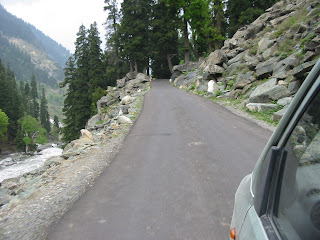Some 'Bemusings' on Cameras and Photography
Unobtrusiveness ought to be the first lesson in photography etiquette for amateurs and professionals alike, before they pick up their instrument, lest it becomes a weapon that has the potential to disturb others in unexpected, unpleasant ways. I am proud to have photographer-friends who respect this etiquette.
The concert was about to begin. A piano-cello ensemble. The announcer introduced the artistes, and requested the audience to turn off the mobiles or “keep them silent”. As he walked off-stage, a popular ring-tone went off, so back he came, and reiterated his request. This time he included an extra-cautionary note: “Please note that there are no extra amplifiers, so audience cooperation is truly needed to keep the acoustic experience pleasant.”
The concert was about to begin. A piano-cello ensemble. The announcer introduced the artistes, and requested the audience to turn off the mobiles or “keep them silent”. As he walked off-stage, a popular ring-tone went off, so back he came, and reiterated his request. This time he included an extra-cautionary note: “Please note that there are no extra amplifiers, so audience cooperation is truly needed to keep the acoustic experience pleasant.”
 |
| Photo courtesy - goethe-zentrum.org |
The concert commenced. The cello player faced the audience,
but with head always bowed down, eyes running over the music notes, even as his
hand ran over the strings. The piano artiste sat facing stage left, and
presented a demure side view to the gallery. The end of each brief piece was
topped up by a bow or two from the artistes.
If you have ever had the pleasure of attending an Indian
classical music concert, you will be able to recall the lively expressions on
the main musician’s face, his eye contact and occasional hand gestures
(well-timed with the beats) to his accompanying artistes, and the overall life
throughout the 2+ hour session. A still picture accompanied by a knowledgeable
write-up of the concert can even compensate for a full video recording of the
concert. (I have noticed that print media photographers leave the venue after clicking
a few shots).
So for the life of me I could not understand what the camera wielders were trying to capture. They were obviously not the video-recording kind, they were too restlessly active in the execution of their task.
Now remember there were no amplifiers? Towards the rear of
the hall these photographers were having a field day – literally, so much so
that the clicks of the innumerable huge DSLR’s were by themselves producing
beats, albeit discordant ones. Sitting among the audience, I was getting more
‘music’ than i bargained for - the frantic clicks of several shutter-release buttons! I wondered too what they were trying to capture.
One artiste’s bowed head, another’s side silhouette, and the 'wooden
countenances' of the instruments?
It turns out that not all camera wielders are professionals.
Most are merely proud / flashy possessors of those long-nosed contraptions that
are capable of prying uncomfortably close and deep. The extendable lens is like
a relentless proboscis that tries to penetrate into another’s peace and
privacy, thankfully without physical contact. An education officer with the
world Wildlife Fund reveals that such fancy-camera wielders were making
nuisances of themselves in forested areas intruding on wildlife territory
without so much as a by your leave. Imagine the scene – a bemused elephant is
staring at a trunk-like protrusion with a biped attached to the other end...
Another event, same venue. (called "The Voice of the Body" - Eka-dvayam) The show was a fusion of ‘Spanish
Flaminco’ [sic], carnatic music and Indian classical dance forms, presented
during the International Film Festival of Kerala. This time the irritant was
flash photography. The stage was intentionally dark, but one amateur had
to capture that darkness, after all! I think it is understood that you don’t use flash
when taking pictures at shows that involve extra light effects.
(A word about international fusion experiments in music and dance. Who can carry out such experiments? Experts in their own field, who can understand, appreciate and respect other's music, not someone who exploits one form assuming that the viewer is an ignoramus. Having said that, I feel that critical reviews of fusion experiments are extremely rare! In this show, there was a Spanish guitarist, a Spanish drummer - who drummed on a box he was seated on, and the Eka-dvayam couple. The dancer changed and adjusted costumes - that could have been designed with more subtlety - right on stage, the singer's music was an unimpressive mix of chants and classical kriti/bhajan lyrics).
Unobtrusiveness ought to be the first lesson in photography etiquette for amateurs and professionals alike, before they pick up their
instrument, lest it becomes a weapon that has the potential to disturb others in
unexpected, unpleasant ways.


Comments
Post a Comment
i appreciate that you have some thoughts to share, and are taking the effort to do so.